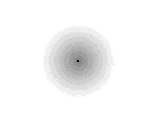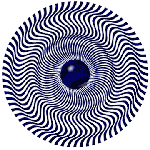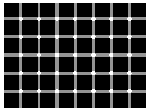
|
|

The thin sheet of tissue like a clear film at the front of your eye is called the cornea. The cornea is a protective coating that protects your eye. The iris is the coloured part near the front of your eye. Whenever light shines in your eye, the iris closes over the hole which is called the pupil, so that not too much light can enter. Then, whenever it is dark, the iris pulls itself back to let the pupil take over. The lens is the bit behind the iris. It lets you focus on objects. Tiny muscles hold the lens in place.
Vitreous humor is the soft squidgy round ball of jelly that takes up most of your eye.
Amazing though the eye is, it is surprisingly easy to fool! Fifth Class have looked at loads of optical illusions. The following are a selection of their favourites.
 The eye is made up of a cornea, an iris, a lens, vitreous humor and a retina. There's also an optic nerve which sends messages to your brain. In the retina, there are rods and conns. The rods see black and white and the conns see colour. Whenever you look at something, your eye actually takes it in upside down, but in milliseconds, the message has been taken up to your brain, which makes sense of it.
The eye is made up of a cornea, an iris, a lens, vitreous humor and a retina. There's also an optic nerve which sends messages to your brain. In the retina, there are rods and conns. The rods see black and white and the conns see colour. Whenever you look at something, your eye actually takes it in upside down, but in milliseconds, the message has been taken up to your brain, which makes sense of it.
 1 |
 2 |
 3 |
 4 |
 5 |